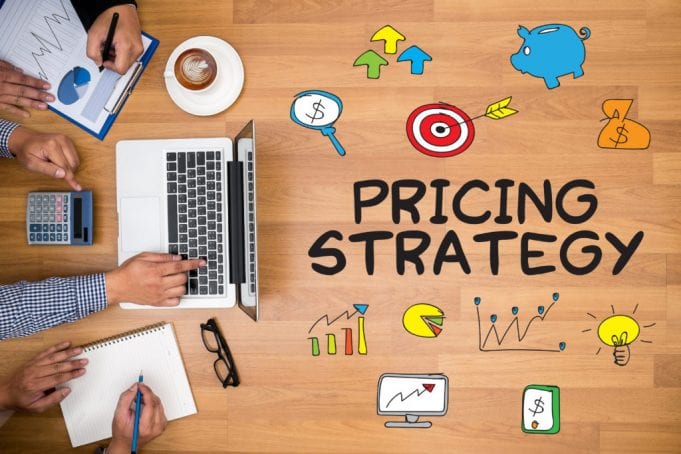One of the most important aspects of creating a successful business is understanding how to develop a pricing strategy.
A pricing strategy has the clearest direct impact on your revenue and generally speaking, it’s the ultimate reflection of the value of your company offers through products and services.
We always like to think of the pricing strategy as a steering wheel to your business that directs where you want your business to go, while giving you full control of the process.
At its core, a solid pricing strategy turns your commercial business strategy into something more actionable.
That said, we shall look at the five easy steps which you can use to create the right pricing strategy for your business.
Determine your Business Goals

First things first, get clear why you want a new pricing strategy. Of course, many of the businesses are based on making profits, but a mistake we see with many businesses is thinking that prices alone will drive the sale and profit margins.
If anything, several factors contribute to the revenue margin, and the prices are the least of them.
So, before you run to create a new pricing strategy, it’s always advisable that you determine your goals at first, and see whether it aligns with the culture and ethos of your business.
Finally, determine exactly why you would want to restructure the pricing strategy- keep in mind that restructuring the pricing strategy comes with several risks.
Market Pricing Analysis
The second critical step from the experts in the pricing analyst careers is to research the pricing strategies in the market as stated by taylorwells.com.au.
Now, while the first step is based on the “Why,” this step does not revolve around your business, but rather that of the general market, including competitors.
By doing this, you’ll have an idea of what strategy to use and even the amount of price to set for each product. This will save you from feeling “out of place,” either due to overpricing or underpricing, especially with regards to your competitors.
Analyze your Target Audience

Once you’ve analyzed the general market and probably have an idea of what strategy to use, the next step is analyzing the target audience, and in my opinion, it’s the most critical step as they determine whether your business fails or succeeds.
By now, you should have your ideal buyer persona, or rather the target audience. The buyer persona will help you refine your implementation strategies and allows you to understand your client’s willingness to buy a product at a certain price.
Ideally, your pricing model should always align with the needs of the clients and why they would purchase your products.
Use the Right Pricing Model
There are four pricing models that marketers can use when determining what strategy to use, and they include:
Premium pricing: In this model, you set your prices higher than those of your competitors. It’s an effective model for businesses selling unique products, or those that are new in a market with limited competition.
Economy Pricing: This is the direct opposite of the premium model, and it’s often targeted to the price-conscious consumers. It’s effective for big businesses that can minimize the costs and keep the products low through economies of scale, and have the resources to sustain the low prices of their products.
Psychology pricing: This model encourages clients to make purchases, not based on any logical inclination, but rather an emotional one.
Bundle Pricing: With this pricing model, you sell products at lower prices were the clients to purchase multiple items as opposed to individual products. The benefit of this model is that it increases the value perception while increasing your average order value.
Businesses can use a price calculator to find the best pricing approach for their goods and services. The calculator can offer guidance on the best pricing model to use by taking into account pertinent information including manufacturing costs, targeted profit margins, and market analyses.
A pricing calculator may assist organizations in making educated decisions to increase profitability and satisfy client requests, regardless of whether it’s premium pricing, economy pricing, psychology pricing, or package pricing.
Communicate Value to your Clients

The prices and value of your products are good as you communicate them.
Make a bold step of collecting price sensitivity data to determine an accurate price for your product. This way, you’ll not only provide great customer service to your clients but also develop an intimate customer relationship.









